By: Kristen Morrow, JCC Naturalist

When I started this blog (just a couple days ago), I wrote that I would put together hiking guides for quiet JCC Preserves. So why then, write about Kent Park, JCC’s largest park, our headquarters, and a park that already sees tens of thousands visitors each year (though arguably, is still a hidden gem)? Well, in my experience, it seems like the vast number of visitors to Kent Park focus their park time in three areas, around the lake, the playground, and around the Conservation Education Center (CEC). However, there is over ten miles of trail here! Whenever I hike some of my favorite trails on the park’s eastern edge, I almost never see another person – both when I hike in the evenings after work and when I come out on the weekends. Often, when I interact with the public, many did not know that the trails in outlying areas of the park even existed! The quiet nature of these spaces is, of course, what draws me to them. I love feeling like I have the whole space to myself. But the world needs to know, especially now: there are miles of wide open trail waiting for you to explore!
In Part 1 of this post, I’ll focus on a trail loop in the eastern half of Kent Park – the trails I gravitate towards most (mostly because my office at the CEC links right up to them). In Part 2, I’ll focus on the trail loops available on the western edge of the park.
Below is the Kent Park Trail Map. I outlined the route I focused on in a white dashed line. This loop is ~2.5 miles. An accompanying scavenger hunt is designed with this loop in mind.
(Note: Today 3/19/20 was a pretty gloomy day. Still made for a super lovely hike, the birds seemed extra noisy in the sprinkling rain, the fog that settled over everything gave the prairie and surrounding woodlands a very cozy feel, and the golden hues of the prairie stood out radiantly against the gray. In photos, however, it looks quite . . . drab. Let me assure you that all of these spaces are really lovely. I’m posting photos of the same spots from other times of the year alongside the gray-day ones for proof!)
A little F.W. Kent Park Bio: Kent Park is JCC’s largest property, standing at 1,052 acres currently. It is in west central Johnson County, about 4 miles west of Tiffin on Hwy 6. People constantly confuse it for a state park, probably because of its size and just how excellently it has been restored and developed. It is not a state park, however, as that would mean it is managed by the Iowa Department of Natural Resources. The tallgrass prairie reconstruction throughout the park is, in my opinion, what makes it really shine. In my time as a naturalist/conservationist in Iowa, which has included jobs where I traveled the state doing conservation work in prairie preserves, I have yet to see more high quality diverse reconstructed prairies than here in Kent Park.
Step-By-Step Guide to this Hike (with little nature notes from the journey!):
This hike starts off at the Conservation Education Center (CEC). This is in the northeast corner of the park, about a five minute drive past the entrance.
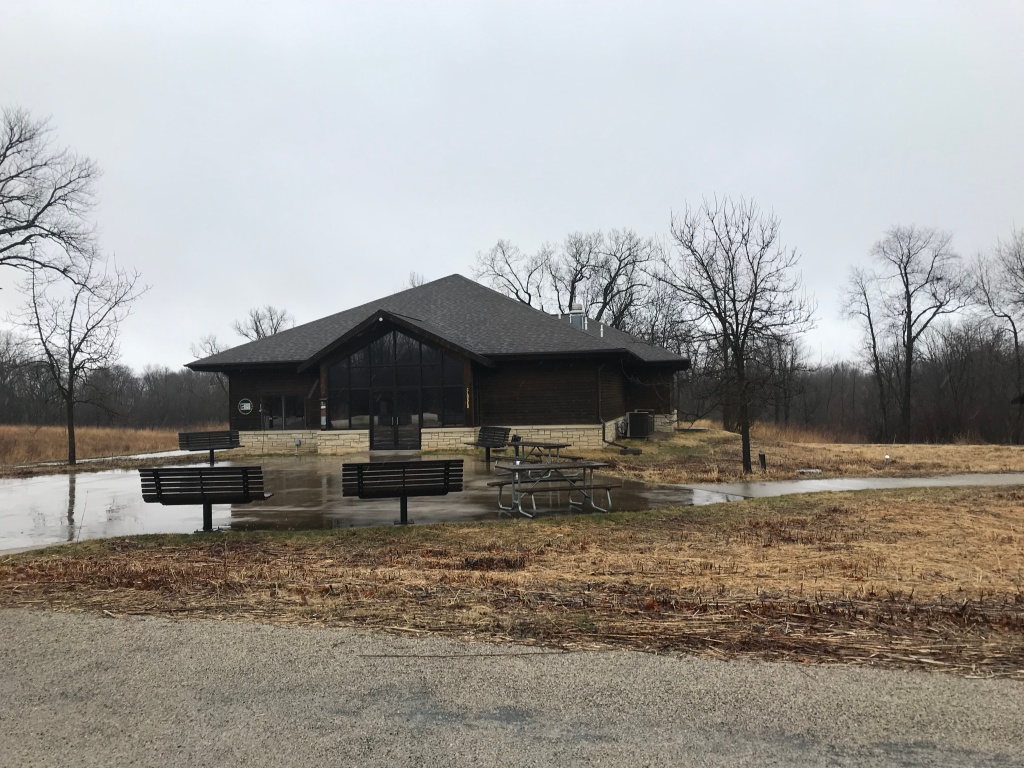

From the CEC Parking Lot, you’ll see a latrine (with hand sanitzer inside) and a couple entry points. There is a 1/2 mile limestone trail that circles the building. This is a great option for families with young kiddos 1-5 years old. When these kiddos are down and hiking on their own, this short loop can last over an hour (I know from lots of experience leading littles on this loop), and has so many amazing things to discover. For today, I’m suggesting to start your hike by taking the trail that goes off to the right (east).
You’ll head down a hill. There are water bodies on both sides of the trail at the bottom. The pond on the west side is what we call the ‘Fishing Pond.’ On the east side is the start of a long string of wetlands. On sunny days in the warm season, the wetland string is a fantastic place to view sunbathing turtles. I once was leading a remarkable group of 4th graders from Mark Twain Elementary on a nature hike past this pond. We crept up (“walk like ninjas!”) on the pond, and the kids’ faces absolutely lit up at the sight of these reptiles. Without me even prompting them, as a group, the kids plopped straight down onto the edge of the trail and got out their nature journals to start sketching. Over ten minutes later, for the sake of keeping our field trip schedule, I had to really work to coerce them to leave that spot, a fact that utterly delighted me.
You’re also likely to see a pair of geese at the bottom of this hill (including plenty of goose poop and maybe even some tracks!) and probably some frantic ducks.


A grassed trail goes off to the right, leading to a place I call ‘Cottonwood Alley.’ This loop will finish on that trail. For now, go up the hill. The limestone trail will end near the top, and a wide grassy trail will continue. Both the limestone and grass should be appropriate for all-terrain strollers, but in wet conditions, the soggy ground may make for a challenge.

At the top of the hill, the trail splits. We’ll turn right, but if you chose to go left, you’d connect up to the boundary line trail.
This upland prairie was planted in 2016. Previously, a plantation of non-native Scotch Pines stood in its place. These were planted through the 1960’s and 1970’s; planting non-native pines was common practice in parks throughout Iowa at that time. Later, these pines began to die by the thousands from Pine Wilt Disease. JCC partnered with the University of Iowa to get these trees removed in 2013; the U of I benefited by being able to use them as a biofuel (mixed with coal) to burn in their Burlington Street power plant. JCC benefited by gaining the resources to remove all trees in short order, allowing staff to start the process of preparing the site for a prairie reconstruction. Now, a native Iowa prairie is steadily developing each year!
In this part of the park, and in the nearby pastured land, you may hear Dickcissels, Eastern Meadowlarks, and even Bobolinks on occasion – all birds that like wide open prairie habitats. I also regularly hear pheasants, and heard two separate pheasants on my hike here on 3/19/20.

While you’re hiking through this area, check out some of the common flowers in the prairie. You’ll see Wild Bergamot:

And tons of Gray-headed Coneflower.
These two species are some of the first to emerge in prairie reconstructions. They dominate the area for the first few years, but soon, other species will establish and take root, making for a much more diverse habitat. A prairie blanketed by Gray-headed Coneflower is pretty breathtaking though.

This whole eastern side of the park is Coyote Town. Lots of coyote scat in the middle of the trail, and on my hike on 3/19/20, a deer leg. Gruesome, but coyotes gotta eat. I also sometimes hear the coyote packs yipping around here at the start of my workday and on evening hikes. I’ve even had the privilege to share a few different moments with lone coyotes up here a few times. Each time, both the coyote and I watched each other from a short distance apart before each moving along. They aren’t anything to fear, and they will leave you well alone.


Many types of predators will poop in prominent places: the middle of the trail, at trail intersections, atop prominent rocks and logs, etc. This helps to mark territory.

Eventually, you’ll come across a trail intersection off to the right. If you went down this hill, you’d connect with Cottonwood Alley. Keep going straight and stay on top of the hill. You’ll head into a stand of sprawling oak trees, then alongside a plantation of pine trees.

The oaks on a greener day a year prior 
The oaks amidst the gray skies of 3/19/20

Along the pines, keep going straight until a trail intersects from the right (west). We’ll head that way, but if you kept going straight up and over the hill, you’d see the wide prairie sloping down into a wetland valley. You’d probably hear frogs singing their mating songs. It’s worth popping up to the top of the hill before turning back around and taking the trail heading west. (If you didn’t turn back and kept going straight, this gravel path would eventually wind around into an operation area with piles of wood chips, soil, firewood, etc. This connects to the road loop across from Bob White Shelter and another trail that winds north through a woodland.)
On the trail west, you’re heading towards the wetland string I mentioned earlier. In the woods, take the right turn at the intersection, which will travel over an earthen dam at the edge of a constructed wetland. You’ll definitely scare up some ducks here.

Across the dam, go left to make a big loop around the Youth Group Camp area. You’ll follow the base of a long sloping hill (planted like an arboretum), and eventually, take a right turn to climb that hill up to the Youth Group campsites and Lodge.
At the top of the hill, an amazing Bur Oak spreads its limbs over the edge of the Youth Group campsites. This tree is my favorite in the park.

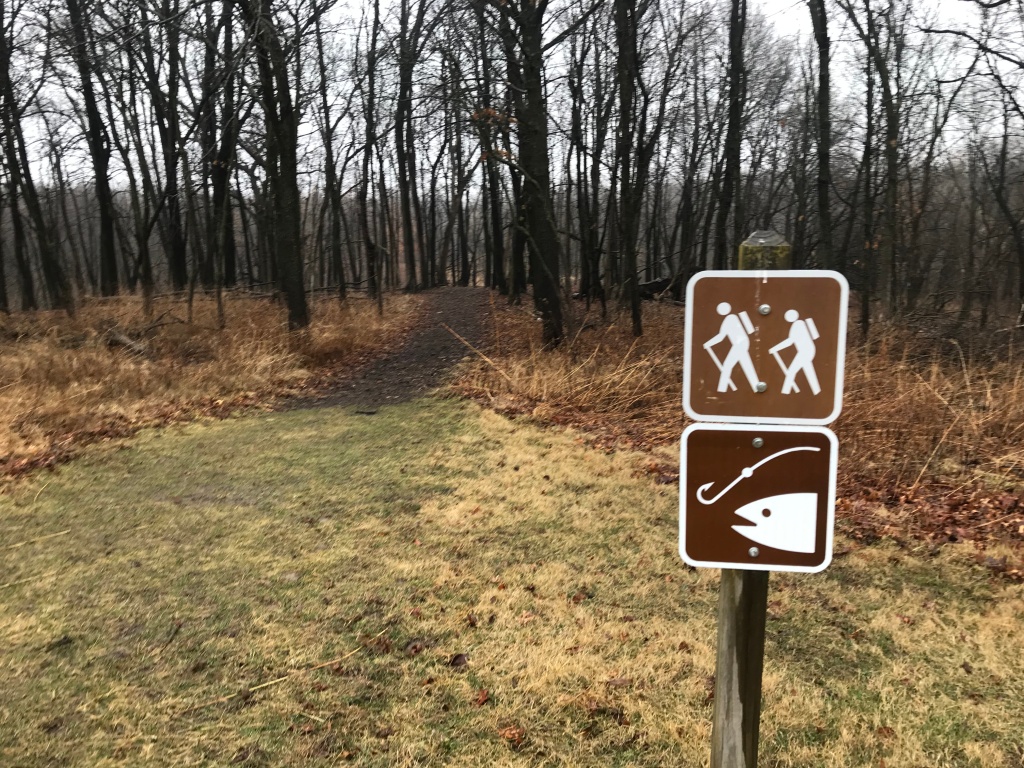
Cross the lawn at the Youth Group Lodge to the next trail opening. The forest on this hillside is my favorite to build woodland shelters in. There is also a wonderful climbing log to enjoy!
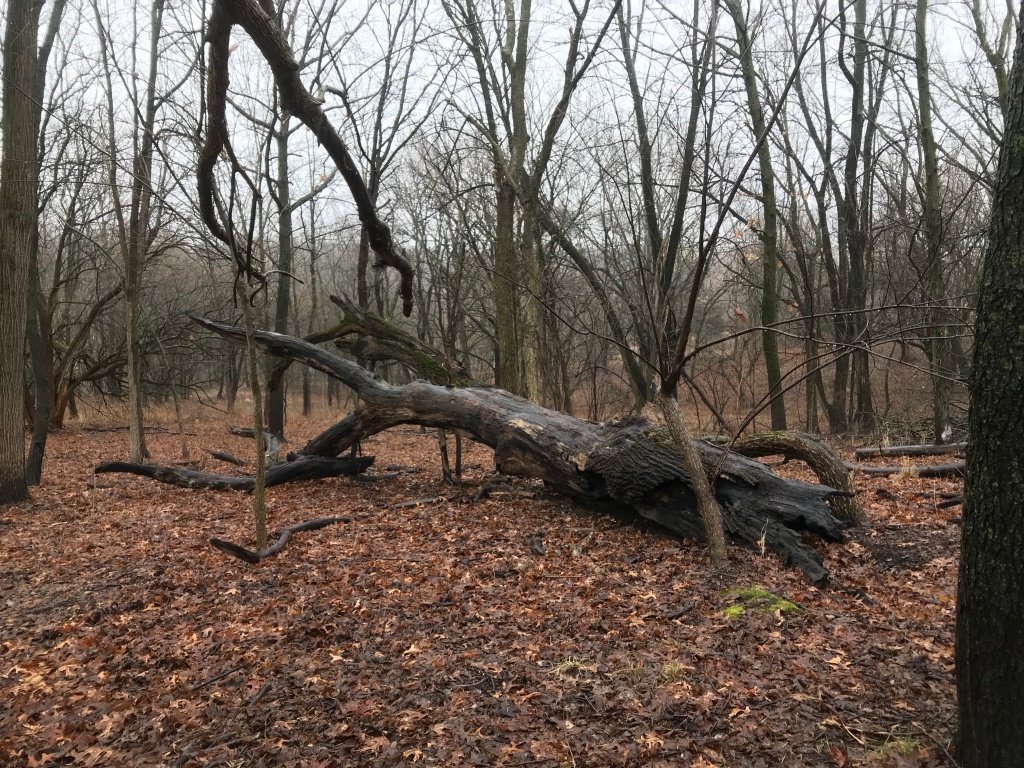
From the bottom of the hill and across the dam, I like to turn right towards the Pony Truss Bridge. I almost always spot at least one Red-headed Woodpecker here. They like to hang out on the dead trees sticking out from the water. The Pony Truss Bridge is also a great place for frog viewing. In the late spring, summer, and fall, hundreds and hundreds of frogs will be visible here with their heads peeking out just above the surface. This is also a fabulous place to catch bullfrog tadpoles. Just make sure you have a long net, because the water gets deeper than wading depth very quickly.
Across the Pony Truss Bridge, you’ll see more evidence of great TSI work. Our Natural Resource Team has steadily worked to open up the prairie and oak savanna to your right (east and north). The large oaks on that hill are so beautiful, especially during the Golden Hour.

This is the last leg of the loop. You’ll head down Cottonwood Alley, where you’ll come to a copse of large cottonwood trees. A couple years ago, we got to witness a Great Horned Owl nest progress in those trees, the fuzzy little babies occasionally visible above the nest’s edge. A little ways farther, you’ll see a dead broken cottonwood sticking out from the water. We call this the Peace Tree (enter peace-sign emoji here). Every year, a pair of geese nests in the crux of this tree, which means that every year, we get to watch the little goslings swimming around in the wetland, flanked by their parents. Sure enough, the two geese were there when I passed, one in the water at the base (likely the male, who guards the nest during this time), the other (likely the female, who does all of the incubation) peering down defensively at me.
right away, they cannot fly until they are about two months old. I would love to know how this works out for the goslings that nest up in this cottonwood. As you can see, it’s a good distance up! Do the goslings take a running jump and splash down into the water below? So many questions…
Nearing the end of the loop, I stopped to examine something white that was at the base of a young tree near the Fishing Pond intersection. At first glimpse, I thought it was a reptile egg, which gave me pause. But when I picked it up, I saw that it was actually the cocoon remains from a giant silk moth. I can’t say for certain which kind, but it was under a Pecan Tree, making me think it could be a Luna Moth or Cecropia Moth cocoon, as both use Pecan Trees as one of their host plants.

Finally, you’ll reconnect with the limestone trail that passes the Fishing Pond and leads back up to the CEC. Once back, you will have hiked 2.5 miles.
Get out and enjoy this loop soon! The next two weekends look to be sunny, and the frogs are calling.







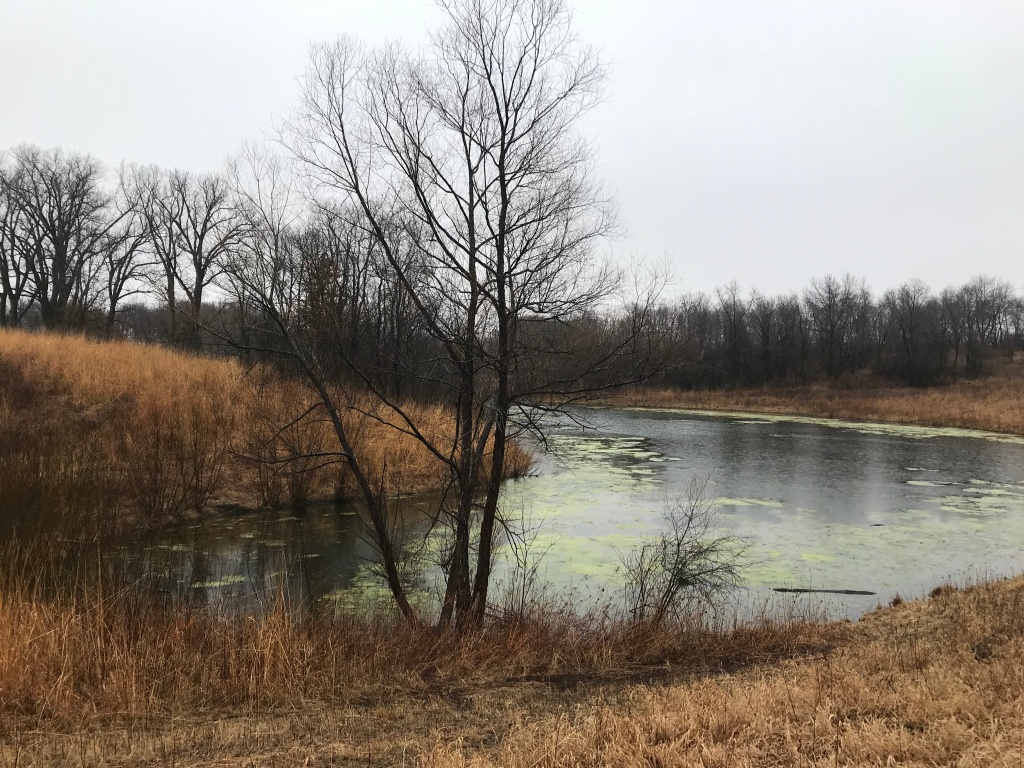






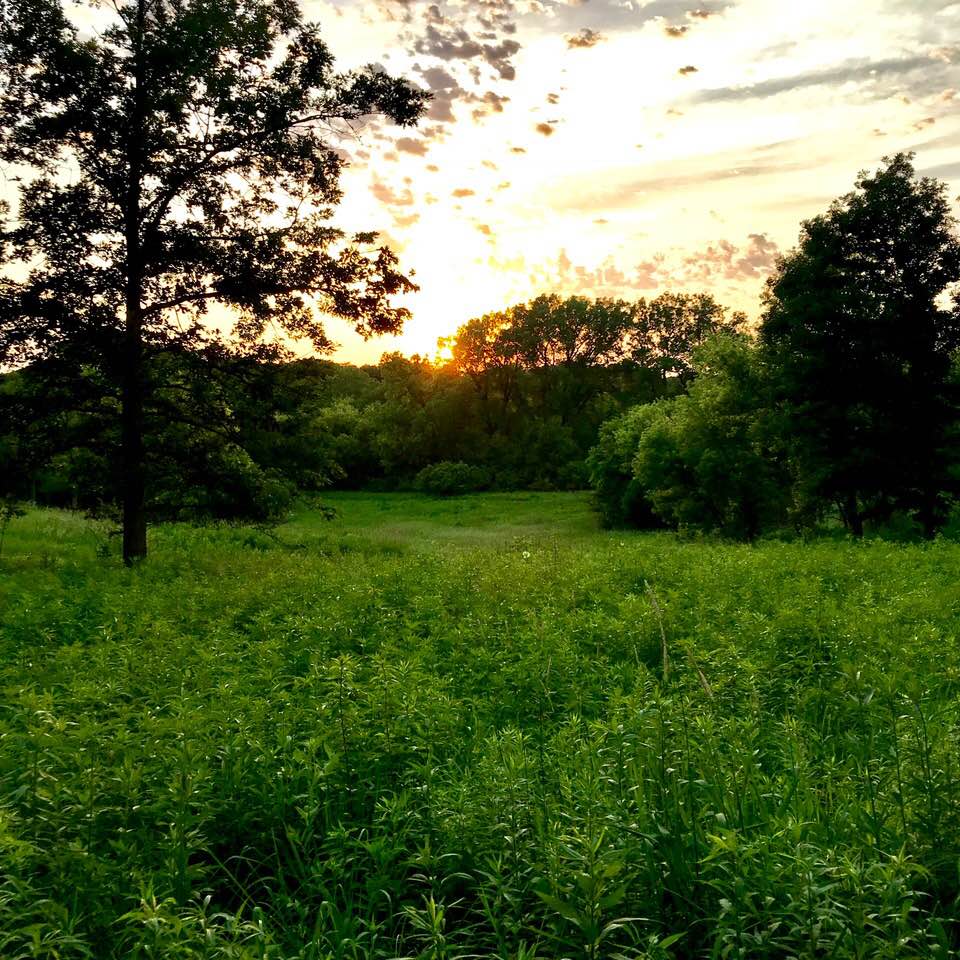



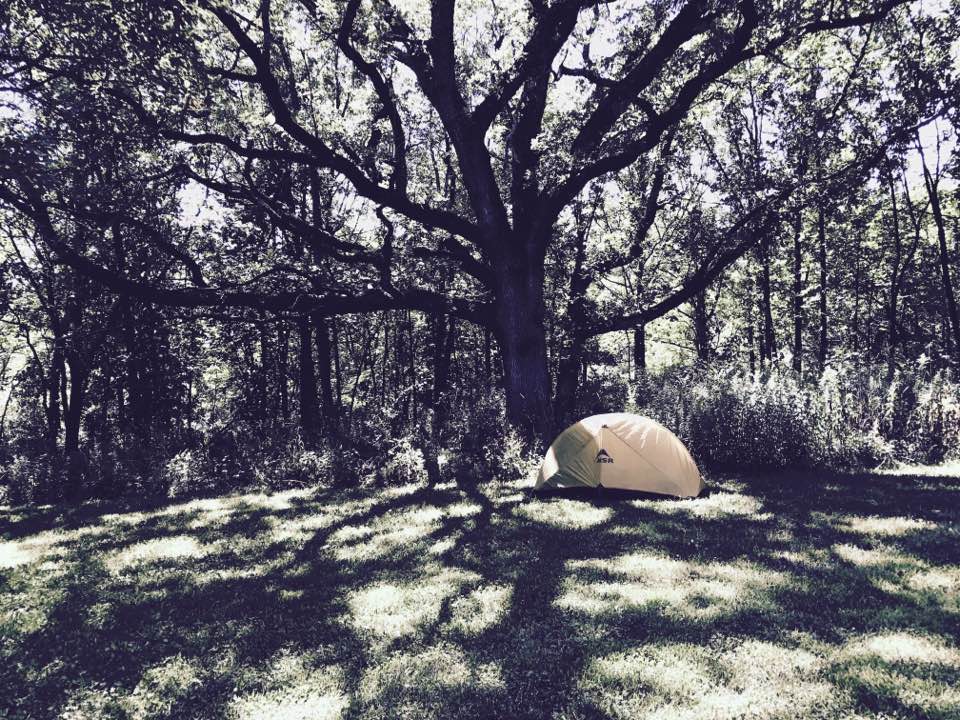
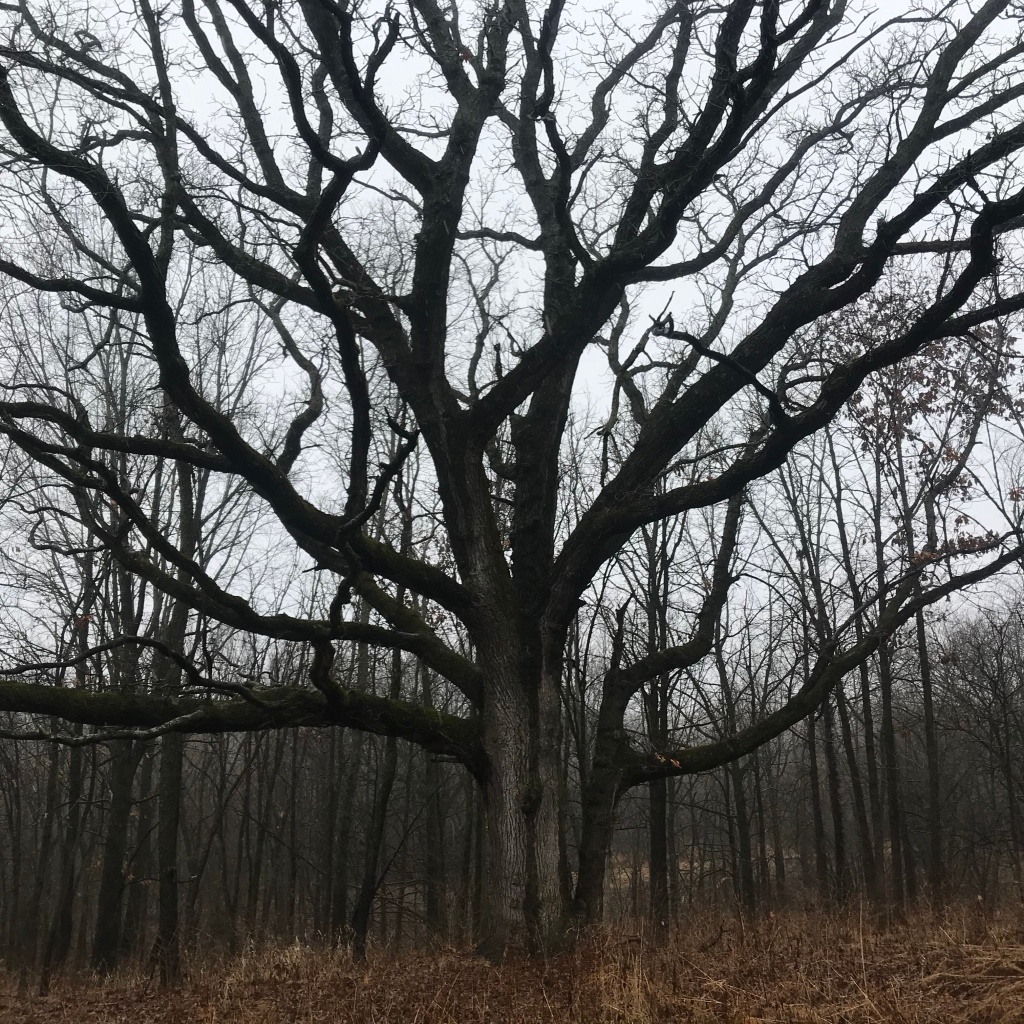


Great write up Kristen! I just hiked this trail last week but after reading your blog, I am ready to go back and hike it again soon. I really enjoy all of your nature observations! Plus I always enjoy your guided hikes! Thanks!
LikeLike
Very glad to hear it – both that you’ve visited this trail already and that you’re ready to go back! 🙂 I can’t wait to be able to host these hikes for the public again. By that point, we’ll have lots of sunshine, warm weather, bird song, and tons of prairie flowers to enjoy!
LikeLike
Great park. I love this trail. We are here nearly every weekend winter spring and fall. See you on the trails.
LikeLike
Fabulous! Glad you are already out and enjoying it!! See you on the trails – from at least 6 feet away. 😉
LikeLike
Kristen, thank you so much for your posts. Mike and I were out hiking yesterday, but this post is comforting to read at home, too. Thank you for all the wonderful things you do for Johnson County!!!
LikeLike
These trails at Kent Park are my favorite! Thanks for the posts on the other parks, too, will definitely check some of those out after reading your blog. Great information and photos!
LikeLike